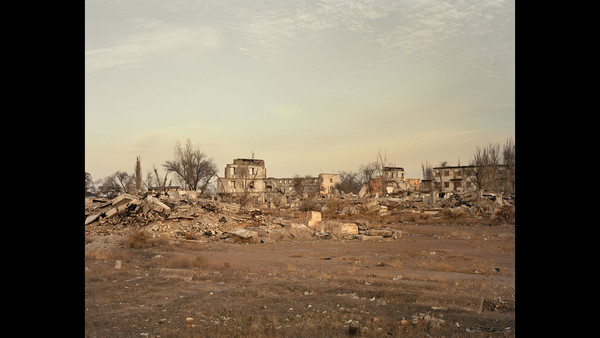 The devastating consequences of the Soviet Union's nuclear past are slowly being uncovered – particularly in Kazakhstan
The devastating consequences of the Soviet Union's nuclear past are slowly being uncovered – particularly in Kazakhstan
The name Kurchatov is not immediately recognisable in the way that Hiroshima or Chernobyl are. The small town on the steppes of northeastern Kazakhstan didn't appear on maps until the 1990s. Before that, it was marked only as "Final Stop" at the end of the railway line. Yet here, from the 1940s to the 1980s, Soviet scientists carried out 456 nuclear tests with a combined power 2,500 times that of the Hiroshima bomb.
Kurchatov was one of several dozen "closed cities" located throughout the Soviet Union where crucial military and strategic industries were sited. Nicknamed "post boxes" because they were known only for their postcodes (Kurchatov's was Semipalatinsk-21), movement in and out of the cities was restricted, and entry was forbidden to foreigners.

Officially, Russians only learnt of their existence in 1986.
It was Lavrenti Beria, the ruthless head of Stalin's secret police, who chose the location in the depths of Siberia for the Soviet Union's nuclear testing programme and ordered the town of Kurchatov to be built – using gulag labour – to house its scientists. The first Soviet nuclear bomb, nicknamed "Joe-1" by the Americans, was tested just 40 miles from Kurchatov in 1949, under Beria's supervision.
But while Beria casually described the area as "uninhabited", in fact there were more than a million people living within 100 miles of the site. Over the next four decades, Soviet researchers used Kurchatov as a base to hone the science of nuclear weapons and from the innocuously named "Dispensary No. 4" studied their effects on the population.
During a test of one particularly powerful bomb, in 1953, the authorities evacuated villagers and livestock, according to a recent academic study based on interviews with local citizens. When the villagers returned, they found their dogs and cats had lost their fur and their chickens had died. But not everyone was evacuated: the Soviet scientists left a group of 40 men behind as human guinea pigs.
The results of their research – like everything else about Kurchatov – were a closely guarded secret during Soviet times. But since then, a grim stream of reports has emerged: in the years of most intensive testing, infant mortality increased to four times the level of the rest of the Soviet Union and for decades afterwards rates of cancer in the region were several times higher than in the rest of Kazakhstan. Today, residents still have a life expectancy that is several years lower than in the rest of the country.
The story of Tuleutai Suleimenov, who was born in 1941 in Semipalatinsk, the nearest major city to the test site, is not an uncommon one. His father and one of his sisters died of cancer, while two other sisters were both scarred by the effects of the blasts. Unlike his neighbours, however, Suleimenov went on to become Kazakhstan's first foreign minister, giving him a central role in dismantling the newly born country's nuclear weapons.
. . .
Even when the test site was closed, soon after Kazakhstan declared independence in 1991, Kurchatov's nuclear past continued to define it. For the next 20 years it was the location of a high-stakes race to secure the plutonium residue in tunnels and containers around the test site, with US and Russian security services fearful that the material could be used by terrorists to build a bomb.
As Kazakhstan's president, Nursultan Nazarbayev, put it ahead of a nuclear security summit at The Hague earlier this year: "No country – nor people – has suffered more in peacetime from the terrible impact of nuclear weapons than our own."
Today, Kurchatov is open for visitors – many of them sporting Geiger counters. The photographer Nadav Kander, who went there in 2011 to document the vestiges of the cold war, recalls "the Geiger counters we brought over from the UK chattering away on our belts, keeping us from the worst of the invisible dangers".
A few hundred miles from Kurchatov, on the shores of Lake Balkhash, sits Priozersk – another Soviet-era secret city. Here, scientists developed the Soviet Union's missile defence system, in 1961 successfully testing the V-1000, at the time the most advanced anti-ballistic missile in the world. But Priozersk remains officially closed to foreigners. It is leased to the Russian military, which uses it as a base for the development of anti-ballistic missile systems.
Kander, who says he sneaked into Priozersk with the help of local contacts, was fascinated by the "combination of beauty and destruction" he found in the former secret cities in Kazakhstan. "The cold war and the relentless quest for nuclear armaments created many of the ruins that we see here," he says. "They now stand as monuments to the near ruin of mankind."
Nadav Kander, 'Dust', is at Flowers Gallery, 82 Kingsland Road, London E2 8DP, from September 10 to October 11. 'Dust' is published by Hatje Cantz, RRP£60. Jack Farchy is the FT's Moscow and central Asia correspondent




